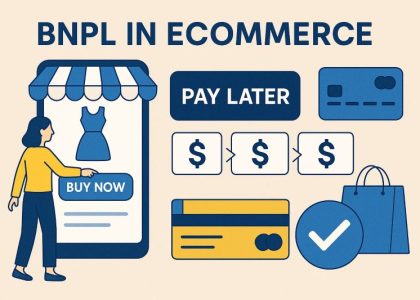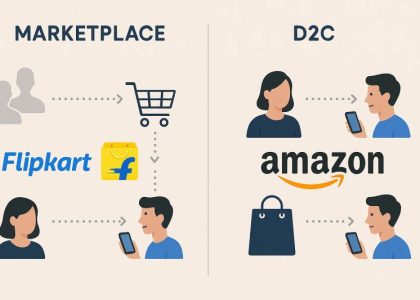Introduction
Virtual shopping is transforming the e-commerce industry, with technology leading the way. Augmented Reality (AR) and Virtual Reality (VR) are changing how consumers explore and purchase products online. By offering immersive and interactive experiences, these tools effectively bridge the gap between physical stores and digital platforms.
In 2025, businesses leveraging AR and VR gain a competitive edge by providing customers with engaging, personalized, and realistic shopping journeys. This blog explores how AR and VR are transforming e-commerce, the benefits they bring, and strategies to implement them successfully.
Understanding AR and VR in E-Commerce
Augmented Reality (AR) overlays digital elements onto the real world using smartphones, tablets, or AR glasses. For example, a customer can visualize how furniture fits in their living room before making a purchase.
Virtual Reality (VR), on the other hand, creates a fully immersive 3D environment. Shoppers can explore virtual stores, try on products, and interact with items as if they were physically present.
Both technologies enhance the online shopping experience, making it more engaging, interactive, and realistic.
How AR and VR Are Changing Online Shopping
- Virtual Try-Ons – AR allows customers to virtually try clothing, accessories, or makeup, reducing the uncertainty of online purchases.
- Product Visualization – Shoppers can see how furniture, home decor, or electronics fit in their space using AR apps.
- Immersive Store Experiences – VR enables virtual stores where customers can browse, interact, and shop without leaving home.
- Interactive Marketing – Brands can create engaging campaigns using AR filters, VR events, or gamified shopping experiences.
- Enhanced Customer Engagement – Immersive technologies make shopping more enjoyable, increasing time spent on your store and boosting conversions.
Benefits of AR and VR in E-Commerce
- Reduced Return Rates – When customers visualize products accurately, the likelihood of returns decreases.
- Higher Conversion Rates – Interactive experiences encourage more confident purchases.
- Stronger Brand Loyalty – Innovative shopping experiences leave a lasting impression, enhancing customer loyalty.
- Competitive Advantage – Businesses adopting AR and VR stand out in a crowded online marketplace.
- Personalization – AR and VR allow for tailored recommendations based on customer preferences and behavior.
Challenges of Implementing AR and VR
- High Development Costs – Creating AR and VR experiences requires investment in technology and expertise.
- Technical Limitations – Not all devices or browsers fully support immersive features yet.
- User Adoption – Some customers may need time or education to embrace new shopping methods.
- Integration Complexity – Seamless integration with existing e-commerce platforms can be challenging.
How to Implement AR and VR in Your E-Commerce Business
- Start Small – Implement AR product previews or virtual try-ons before building full VR experiences.
- Choose the Right Tools – Platforms like Shopify AR, WooCommerce AR plugins, or custom VR solutions can help.
- Focus on UX – Ensure experiences are easy to use, fast, and visually appealing.
- Educate Customers – Provide tutorials or guides to help shoppers use AR and VR features confidently.
- Measure Performance – Track metrics like engagement time, conversion rates, and return reduction to evaluate success.
The Future of Virtual Shopping
AR and VR are no longer optional—they are becoming essential tools for modern e-commerce. In 2025, brands that adopt these technologies will redefine customer expectations, delivering interactive and immersive shopping experiences that drive sales, reduce returns, and foster loyalty.
By embracing AR and VR, e-commerce businesses can create a shopping experience that feels as real as visiting a physical store, all from the comfort of the customer’s home.
Final Thoughts
Augmented and Virtual Reality are transforming online shopping in unprecedented ways. From virtual try-ons to immersive stores, these technologies offer an engaging, personalized, and highly interactive experience. Brands that invest in AR and VR now will lead the e-commerce landscape in 2025, setting new standards for customer engagement, satisfaction, and loyalty.





